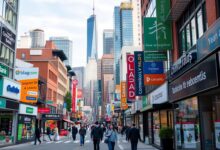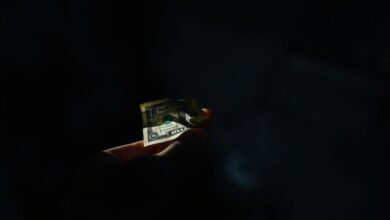Our Guide to Navigating College Loans
Understanding financial aid for college can seem overwhelming. Yet, it’s a key step for many students. With nearly 20 million students set to attend colleges in 2024, knowing your options is crucial.
Tuition costs keep going up. So, making smart choices about your college funding is essential. Navigating student loans means understanding your choices and their impact on your future.
Our guide aims to help you through this process. We’ll give you the info you need to make smart financial choices for your future.
Key Takeaways
- Understanding the different types of financial aid available for college
- The importance of making informed decisions about financing your education
- Strategies for navigating the complex world of college loans
- Tips for managing your financial aid effectively
- Resources for further guidance on financial aid for college
Understanding College Loans and Their Importance
The cost of going to college keeps going up. It’s key for students and their families to understand college loans. These loans help pay for tuition, living costs, and more.
Knowing about college loans is important. We’ll look at what they are, why they matter, and the different kinds available.
What Are College Loans?
College loans, or student loans, help pay for college. They need to be paid back after you graduate or go part-time. They help students get the money they need for school.
Why Should We Consider Them?
Many students need college loans to go to school. They provide the money needed for education. It’s about getting the financial help you need now and planning for the future.
Types of College Loans Available
There are many college loans out there. They fit different needs and who can get them. The main types are:
- Federal student loans, backed by the government, with good terms like low interest and flexible payback.
- Private student loans, from banks and others, with competitive rates but need a good credit score.
Knowing about these loans helps students choose the right one. We’ll look closer at federal and private loans later.
By learning about the different college loans, students can make smart choices. This helps them reach their educational and financial goals.
Federal Student Loans: An Overview
It’s important to know about federal student loans to make smart choices about paying for school. These loans are backed by the government. They offer fixed interest rates and flexible repayment plans.
There are many types of federal student loans, each with its own rules and requirements. We’ll dive into these to see how they can help us achieve our educational dreams.
Direct Subsidized Loans
Direct Subsidized Loans are a special kind of federal loan. The government covers the interest while we’re in school, during grace periods, and when we’re not making payments. These loans are for those who really need them, based on how much money they have.
To get Direct Subsidized Loans, we must be undergraduate students showing financial need. Our school decides how much we can borrow, based on our need and other aid we get.
Direct Unsubsidized Loans
Direct Unsubsidized Loans don’t rely on financial need. Interest starts building up as soon as we get the loan. So, we have to pay interest from the beginning.
Both undergrad and grad students can get Direct Unsubsidized Loans. Our school decides how much we can borrow, looking at our school costs and other aid.
Direct PLUS Loans
Direct PLUS Loans are for grad students and parents of undergrads. They don’t check financial need but do check credit history.
Direct PLUS Loans have a higher interest rate than other federal loans. But, they offer a fixed rate and flexible repayment plans. This makes them a good choice for extra funding.
Knowing about the different federal student loans helps us make better choices. We can plan our financial aid to support our education and financial goals.
Private Student Loans: What You Need to Know
Private student loans are a big help for many students. They help cover college costs when federal loans aren’t enough. These loans come from banks or credit unions and might need a good credit score or a cosigner.
How to Choose a Lender
Choosing the right private lender is important. We should look at interest rates and repayment terms. It’s also key to compare rates and check the lender’s reputation and service.
Variable vs. Fixed Interest Rates
Private loans can have fixed or variable interest rates. A fixed interest rate stays the same, making payments easy to predict. But, a variable interest rate can change, affecting our payments.
Loan Terms and Conditions
It’s crucial to understand a private loan’s terms. We need to read the agreement carefully. This includes the repayment period, interest rate, and any fees. Knowing our options for payment breaks is also important.
The Application Process for College Loans
To get college loans, understanding the application process is key. It starts with the FAFSA. The Free Application for Federal Student Aid (FAFSA) is a must for federal aid. Even for non-federal loans, filling out the FAFSA is wise. Some schools use this info for their aid too.
Preparing for the FAFSA
Getting ready for the FAFSA means collecting needed documents and knowing the timeline. Start early, as it’s available on October 1st each year. Meeting deadlines is crucial because some aid is given out first.
- Check the FAFSA requirements and deadlines.
- Get the needed documents, like Social Security numbers and tax returns.
- Make an FSA ID for the student and parent (if needed).
What Documents Do We Need?
To fill out the FAFSA, you’ll need personal and financial info. You’ll need:
- Your Social Security number or Alien Registration number.
- Your driver’s license (if you have one).
- Your federal income tax returns and W-2s.
- Info on untaxed income, like child support.
Having these documents ready makes the process easier.
“The FAFSA is a gateway to various financial aid opportunities, making it a crucial step in securing the funds needed for college.”
Common Mistakes to Avoid
When applying for college loans through the FAFSA, avoid these mistakes:
- Missing deadlines can limit your aid options.
- Incorrect or incomplete info can slow down processing.
- Not reporting financial changes can affect your aid.
Knowing these mistakes helps us avoid them. This makes the application smoother and increases our chances of getting the aid we need.
Interest Rates and Loan Repayment Options
Managing your student loans means knowing about interest rates and repayment plans. The interest rate on your loans can change how much you pay back. It’s key to understand this to handle your loans well.
Understanding Interest Rates
Interest rates on student loans add extra money to what you borrow. Comparing student loan rates from different lenders can help you find the best deal. Federal loans have fixed rates set by the government, while private loans might have fixed or variable rates.
When looking at student loan refinancing, compare rates to get the best deal. Refinancing can lower your interest rate and monthly payments. But, be careful: refinancing federal loans with a private lender might mean losing federal benefits.
Repayment Plans Explained
The repayment plan you choose can greatly impact your finances after college. Federal loans offer repayment plans like income-driven plans. These plans adjust your payments based on your income and family size.
Here are some repayment plans to think about:
- Standard Repayment Plan: Fixed monthly payments for up to 10 years.
- Graduated Repayment Plan: Payments start low and increase every two years, typically over 10 years.
- Income-Driven Repayment Plans: Payments are based on income and family size, with forgiveness options after 20 or 25 years.
Choosing the right plan depends on your financial situation, career, and goals. Also, look into loan forgiveness programs. They can forgive part or all of your loans under certain conditions.
By understanding your options and making smart choices, you can manage your student loans well. This will help you achieve financial stability.
Managing and Maintaining Your Loans
After getting our college loans, managing them is key. We need to use smart strategies to keep up with our payments and avoid money troubles.
Keeping Track of Our Loans
To manage our loans well, we must track them. We need to know who our loan servicer is, our current balance, and our repayment choices.
It’s important to check our loan statements often. This way, we know our balance, interest rate, and how we’ll pay back the loan. We should also save our loan documents and any letters from our lender.
- Loan servicer contact information
- Current loan balance and interest rate
- Repayment term and monthly payment amount
Importance of Communication with Lenders
Talking to our lenders is also key. We should tell them if our contact info changes and reach out if we’re struggling to pay.
By talking to our lenders early, we can avoid extra fees and bad credit marks. If money is tight, we should ask about deferment or forbearance.
| Loan Aspect | Description | Importance |
|---|---|---|
| Loan Servicer | The company managing our loan | High |
| Loan Balance | The current amount owed | High |
| Interest Rate | The rate at which interest accrues | High |
| Repayment Terms | The schedule for repaying the loan | High |

By using these tips and staying informed, we can manage our college loans effectively. This helps us achieve financial success in the long run.
Resources for College Loan Borrowers
Managing college loans can be tough, but there are many resources to help. These tools make it easier to handle your debt.
There are many tools and support systems for college loan borrowers. They provide important information and help with the complexities of student loans.
Online Tools and Calculators
Online tools and calculators are key for college loan borrowers. They help understand repayment options, monthly payments, and the loan’s total cost.
Some popular online tools include:
- Loan repayment calculators that help borrowers understand their monthly payments.
- Loan forgiveness calculators that estimate potential forgiveness amounts.
- Consolidation calculators that compare different consolidation options.
| Tool | Description | Benefit |
|---|---|---|
| Loan Repayment Calculator | Calculates monthly payments based on loan amount and interest rate. | Helps borrowers plan their finances. |
| Loan Forgiveness Calculator | Estimates potential loan forgiveness amounts. | Aids in understanding potential savings. |
| Consolidation Calculator | Compares different loan consolidation options. | Assists in making informed decisions about loan consolidation. |
Support Groups and Organizations
Support groups and organizations are vital for college loan borrowers. They offer help and guidance. Borrowers can share their stories and get support from others.
Some notable organizations include:
- The College Board, which provides resources and guidance on college financing.
- The National Foundation for Credit Counseling (NFCC), which offers financial counseling services.
- Student Loan Borrower Protection, which advocates for borrower rights.
By using these resources, college loan borrowers can better manage their loans. They can make informed decisions about their finances.
Tips for Reducing College Loan Debt
College students can cut down their loan debt by looking into other funding options and managing their money well. By using smart strategies, students can lessen their loan reliance and make college more affordable.
Scholarships and Grants
Getting scholarships and grants is a great way to lower college loan debt. These funds don’t need to be paid back, making them a good choice for students.
Types of Scholarships:
- Merit-based scholarships
- Need-based scholarships
- Talent-based scholarships
- Demographic-specific scholarships
To increase their chances, students should look for and apply to many scholarships. Keeping a good academic record and participating in extracurricular activities can also help with merit-based scholarships.
Work-Study Opportunities
Work-study programs let students earn money for school by working part-time jobs, often on campus. These jobs not only cut down financial stress but also offer valuable work experience.
“Work-study programs can be a win-win for students, offering financial support and career development opportunities.” – Financial Aid Expert
To take advantage of work-study, students should:
- Check if they qualify by filling out the FAFSA
- Look for work-study jobs on their college’s job board
- Apply for jobs that fit their skills and interests
Budgeting During College
Good budgeting is key to handling college costs and reducing loan needs. By making and sticking to a budget, students can better manage their finances.
| Category | Budget Allocation | Tips for Reduction |
|---|---|---|
| Tuition and Fees | Prioritize financial aid and scholarships | Consider part-time enrollment or online courses |
| Living Expenses | Allocate based on necessity | Share accommodations, cook at home |
| Textbooks and Supplies | Budget for the semester | Buy used textbooks, digital resources |
By watching their spending and making smart financial choices, students can greatly reduce their college loan debt.

Preparing for Life After Graduation
As graduation approaches, it’s crucial to prepare for what comes next. We need to know how to handle our student loans. This includes finding the best loans for us.
Loan Forgiveness Options
Understanding loan forgiveness programs is key. These programs can greatly reduce our debt. We should look into who qualifies and how to apply.
Repayment Planning
Planning our loan repayment is also important. We should look at different repayment plans. This helps us manage our debt better.
Financial Literacy
Learning about finances is essential. Knowing how to budget, save, and invest helps us make smart money choices. It also helps us deal with loan repayment challenges.
By being proactive and informed, we can handle our student loans well. This leads to financial stability after graduation.









